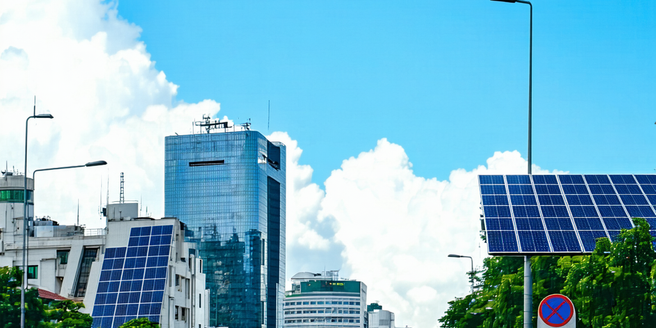Green Tech Solutions

Understanding Green Technology Trends
Green technology continues to evolve as we focus on building a sustainable future. The trend highlights designing products, processes, and policies that reduce environmental impact. With each innovation, we move closer to achieving substantial environmental benefits on a global scale. Key developments include advances in solar energy, wind power, and the increasing efficiency of battery storage technologies. Additionally, the growth of smart grids and IoT devices is transforming how energy is distributed and consumed. Governments worldwide are enacting policies that encourage investment in green tech, driving business innovation. Understanding these trends helps businesses and individuals actively participate in sustainable practices, leading to a cleaner and more resilient environment.
Innovations in Renewable Energy
Renewable energy innovations are pivotal in the push towards sustainability. Solar panels are becoming more efficient with perovskite cells, which offer higher efficiency at lower costs than traditional silicon. Wind energy is also advancing with the development of floating wind farms, which unlock vast areas of ocean space for clean energy capture. With the integration of smart grid technology, energy distribution is becoming more effective and reliable. Energy storage is another key aspect, with breakthroughs in battery technology enabling longer storage and discharge times. These innovations are crucial in reducing dependence on fossil fuels, pointing to a future where renewable energy can meet global demand.
Eco-Friendly Transportation Options
Transportation contributes significantly to global carbon emissions, but eco-friendly innovations are transforming the sector. Electric vehicles (EVs) are at the forefront, with advancements in battery life and charging infrastructure making them a more viable option for consumers. Solar-powered charging stations are emerging as a sustainable solution to support the growing number of EVs on the road. Public transportation systems are integrating electric and hybrid buses to reduce emissions in cities. Additionally, the rise of bike-sharing programs and pedestrian-friendly urban design encourages a shift away from car dependency. These transportation options not only reduce emissions but also promote healthier lifestyles by encouraging walking and cycling.
Sustainable Agriculture Practices
Sustainable agriculture practices are vital for ensuring food security and preserving our ecosystems. Innovative methods such as permaculture, agroforestry, and crop rotation enhance soil health and increase biodiversity, leading to more resilient agricultural systems. Incorporating traditional knowledge from indigenous communities can also offer valuable insights into sustainable land management. The integration of technology, like precision farming and drones, allows farmers to optimize resource use and maximize yield efficiency. Additionally, the focus on organic farming and reducing chemical inputs helps maintain environmental balance. These practices ensure sustainable food production while protecting natural resources for future generations.
Energy-Efficient Home Solutions
Home energy efficiency is a cornerstone of sustainable living. Simple measures, such as improved insulation and smart thermostats, significantly reduce energy consumption and costs. For instance, sealing air leaks can further enhance the energy-saving potential of a home. Innovations in LED lighting and Energy Star-rated appliances offer householders even more ways to save. Moreover, harnessing renewable energy through rooftop solar panels empowers homeowners to generate their own clean energy. Water conservation techniques, such as low-flow fixtures and rainwater harvesting, complement these efforts. Together, these energy-efficient solutions contribute to a sustainable lifestyle, reducing the carbon footprint one home at a time.
The Future of Green Tech in Industry
The industrial sector is undergoing a green revolution, with significant advancements in technology. The adoption of energy-efficient machinery and processes is reducing waste and energy use. Innovations like industrial IoT, machine learning, and AI optimize production, enhancing sustainability. Government policies and incentives are also encouraging companies to invest in greener technologies. Circular economy initiatives focus on recycling and reusing materials, minimizing resources extraction. Green building practices are becoming standard, integrating sustainable materials and energy systems. As the industry recognizes the economic benefits of green technology, we can expect further advancements that align environmental responsibility with business success.